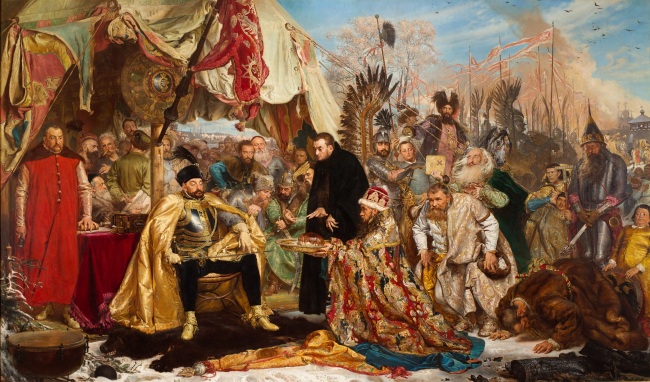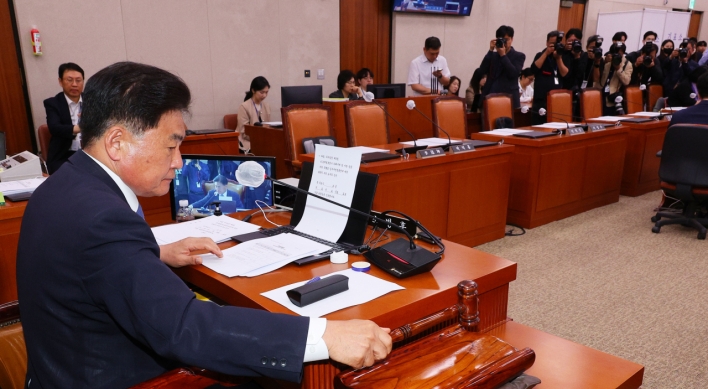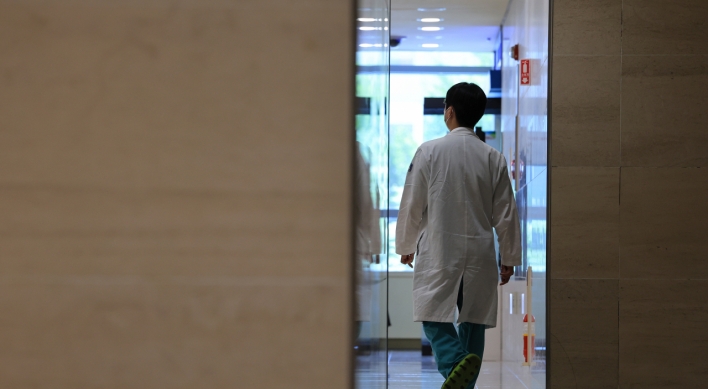Polish art on extensive view in Seoul
National Museum of Korea presents in-depth exploration of Polish art from medieval period to 20th century
By Lee Woo-youngPublished : June 11, 2015 - 19:43
Many Polish artists created works intended to raise the morale of fellow citizens after their country lost independence in 1795 to Russia, Prussia and Austria.
During this tragic time of history, master painter Jan Matejko reminded Poles of the historical glories of Poland to elevate their spirits. Chopin borrowed melodies from Polish traditional dance and created great piano pieces, mazurkas and polonaises.
Such art pieces reflecting the strength and spirit of Poles throughout its turbulent history are on view in Seoul along with other treasured collections of Polish art at the National Museum of Korea. The exhibition features some 250 works of art that date back from the Medieval period to the 20th century.
“This is the first extensive exhibition of Polish art in Korea. We wanted to show Polish culture, history and land as seen by Polish artists,” said Agnieszka Morawinska, director of the National Museum in Warsaw, in the exhibition opened last week.
During this tragic time of history, master painter Jan Matejko reminded Poles of the historical glories of Poland to elevate their spirits. Chopin borrowed melodies from Polish traditional dance and created great piano pieces, mazurkas and polonaises.
Such art pieces reflecting the strength and spirit of Poles throughout its turbulent history are on view in Seoul along with other treasured collections of Polish art at the National Museum of Korea. The exhibition features some 250 works of art that date back from the Medieval period to the 20th century.
“This is the first extensive exhibition of Polish art in Korea. We wanted to show Polish culture, history and land as seen by Polish artists,” said Agnieszka Morawinska, director of the National Museum in Warsaw, in the exhibition opened last week.

Polish art may not be familiar to many Koreans whose culture has closer relations with American and Western European culture. This exhibition attempts to bridge the cultural gap between the countries and find similarities in the historical experience of losing sovereignty.
Highlights of the exhibition are two prized documents related to two national heroes of Poland ― Frederic Chopin and Nicolaus Copernicus. The exhibition presents an original musical manuscript of a Chopin mazurka piece and a copy of Nicolaus Copernicus’ script of “De Revolutionibus Orbium Coelestium (On the Revolutions of the Heavenly Spheres)” supporting his heliocentric theory.
Chopin’s original music manuscript is on display along with his bust, portraits and a cast of his left hand, which indicates the great influence he had on Polish people.
Originally displayed at the royal castle in Warsaw, a painting by Jan Matejko depicting the victory of King Stefan Batory in a two-year war against Prussia from 1579-1581 made a rare trip to Korea.

The painting is considered a symbol that elevated the spirits of Poles during the time they lost sovereignty in the 19th century.
The exhibition also presents modern Polish art created after its independence in 1918. Paintings, sculptures and posters reflect the attempt to integrate Polish ethnic features and avant-garde style from Western Europe in the 20th century.
The exhibition “Polish Art: An Enduring Spirit” runs through Aug. 3 at the National Museum of Korea. Admission is 13,000 won ($12) for adults, 11,000 won for university and high school students and 8,000 won for younger children. For more information, call (02) 312-7613.
By Lee Woo-young (wylee@heraldcorp.com)










![[Kim Seong-kon] Democracy and the future of South Korea](http://res.heraldm.com/phpwas/restmb_idxmake.php?idx=644&simg=/content/image/2024/04/16/20240416050802_0.jpg&u=)








![[Today’s K-pop] Zico drops snippet of collaboration with Jennie](http://res.heraldm.com/phpwas/restmb_idxmake.php?idx=642&simg=/content/image/2024/04/18/20240418050702_0.jpg&u=)